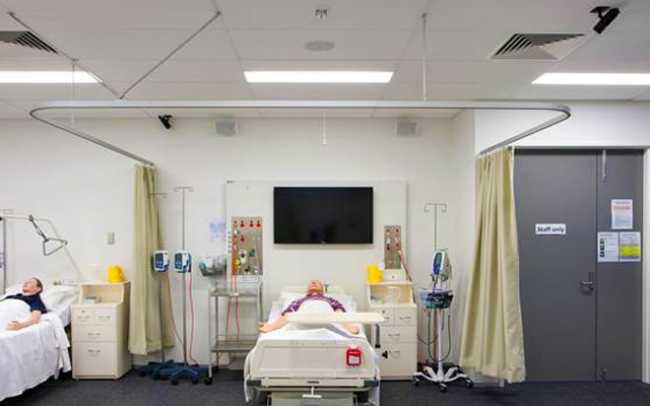USC named Crestron Education Project of the Year
Published: ASIA

AUSTRALIA: A 64x64 HDBaseT / HDMI matrix installation recently carried out by InDesign Technologies has been named the 2014 Crestron Education Project of the Year. The University of the Sunshine Coast (USC) has recently constructed a new $33 million Learning and Teaching Hub. The Crestron system installed forms the backbone of the nursing simulation facilities that the new hub is able to provide.
Simulated nursing is becoming an increasingly widespread and encouraged practice. Teaching doctors are positioned in the control room behind one-way mirrors, where they are able to instruct and evaluate student performance. Debriefing sessions are then conducted afterwards to reflect on the experience.
The extensive system designed and installed by InDesign spans two campuses; encompassing nine high-tech nurse teaching spaces and four control rooms.
‘It’s the highest level of IT and A/V integration I’ve ever seen!’ remarked Ryan Eling of SimGhosts, who performs top-level simulations in the US.
The 80 input system comprises fixed and PTZ cameras, in addition to fixed and wireless lapel microphones – all of which needed to be monitored and recorded. Crestron 15-inch touchpanels positioned in each control room give teachers the ability to select any combination of inputs. By using the Creston Digital Media Matrix, these signals can be routed to any of the 12 B-Line medical capture servers deployed across the two campuses.
‘The B-Line capture servers are purpose built for the medical environment, and as a result aren’t cheap, but without the Crestron Digital Media matrix we’d require 23 B-Line capture servers to record the same spaces across the two facilities,’ explained Peter Coman of InDesign Technologies. ‘Whilst it is necessary to record every input device, it’s not required to record them simultaneously, making the Crestron Digital Media matrix the perfect fit.’
The system also facilitates the debriefing sessions by allowing both live and recorded content to be sent to a number of GPL (General Purpose Learning) positions within the building. It has been designed with 12 individual links to and from the Engage 32x32 Crestron Digital Media matrix and an additional five links to the general purpose teaching spaces. This reportedly allows users to freely distribute the content between various teaching spaces throughout the building.
Not all simulations in use today have taken the same approach as InDesign. ‘Some simulation capture systems are IP based, this may well be a cheaper solution, however it has some major downsides, like compressed video and increased traffic on the client’s network.’ reported Mr Coman. ‘It’s paramount that facilitators review simulations in Full HD to accurately assess patient care.
‘Our solution overcomes this problem with 47 Panasonic Full HD cameras and 58 Crestron TX transmitters, which transmit uncompressed Full HD signals over the dedicated audiovisual cabling infrastructure, thereby maintaining picture quality whilst having no effect on the performance of the clients IT network. Additionally, power for these transmitters which would normally require 50 or more GPOs to be located adjacent to every device, is seamlessly delivered remotely from the Crestron Digital Media matrix switch via PoDM, all over the one cable.’
The system in use at USC now is entirely non-proprietary. Should the University choose to do so, the cabling infrastructure can be repurposed as required, explained Mr Conon. ‘It’s proof that forethought, planning, detailed design and documentation, combined with a quality installation team always yield the best results,’ he said.
Clearly impressed with the system, Michelle Hall, USC programme manager, described the project as ‘a true global showcase for both organisations – USC and InDesign.’
www.crestron.com
www.indesigntechnologies.com.au
www.usc.edu.au
